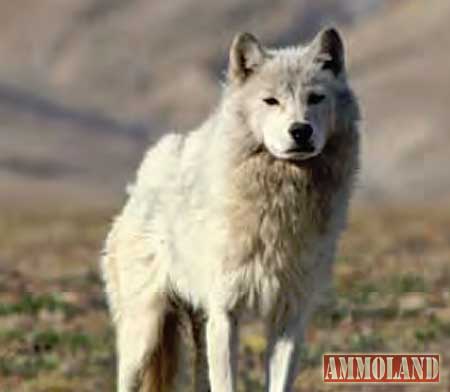

Juneau -AK –-(Ammoland.com)- Today, the Alaska Department of Fish and Game (ADF&G) released a report presenting findings related to the March 8, 2010, wolf attack that killed 32-year-old Candice Berner near the village of Chignik Lake on the Alaska Peninsula.
The report summarizes agency response and subsequent investigation.
“All lines of evidence are consistent with the conclusion that two or more wolves killed Ms. Berner. The tragic encounter occurred as she jogged down the road less than two miles from the village,” said Lem Butler, principal investigator for ADF&G, and one of four authors of the report.
ADF&G’s investigation included on-scene evaluation of wolf tracks, interviews of those first to arrive at the scene, collection of wolves from the nearby area, and analyses of DNA and of other forensic evidence. Wolf DNA was recovered from the victim and her clothing. DNA test results provided by the U.S. Geological Survey lab in Anchorage indicated that two to four wolves were most likely involved, excluded other animals, and connected one of the wolves killed by the department to the incident.
The broader investigation indicated Ms. Berner was on the road, likely jogging away from town, while the wolves traveled toward town by moving along the road and openings in the brush. It could not be determined if this was a surprise encounter for both Ms. Brenner and the wolves, but evidence clearly shows a predatory response from the wolves.
ADF&G personnel and Alaska State Troopers shot two wolves and contracted trappers later killed six more within 15 miles of the village. The wolves were taken for public safety and for evaluation of biological factors that may have been associated with the attack.
ADF&G veterinarian Dr. Kimberlee Beckmen performed necropsies and collected samples for disease testing and DNA analyses on each of the eight wolves taken. One wolf was clearly implicated in the attack through DNA evidence. It was in apparent good health with very large fat reserves. All but two wolves were in good to excellent condition. There was no DNA evidence linking the two wolves in poor condition to the attack. Investigators found no evidence in any of the wolves of contributing factors to the attack such as rabies, disease, defense of food, or habituation to human food.
“We hope that the report’s findings help bring closure to Ms. Berner’s family, to the community of Chignik Lake and others affected by this sad incident.” said Butler.
He also pointed out that wolf attacks on humans are rare and people should not be unnecessarily fearful. People should always maintain a safe distance and healthy respect when encountering wolves or other wild animals. Bear and moose encounters pose more risk to travelers in Alaska than wolves, but all wild animals can be unpredictable.
Bob Berner, Candice Berner’s father, said he hopes that people will learn from his daughter’s death through an increased awareness of the potential danger and by taking steps to increase safety.
“People should be mindful of the potential harm that wolves and other wild animals are capable of inflicting,” he said.
The report, “Findings Related to the March 2010 Fatal Wolf Attack Near Chignik Lake, Alaska” is available at: www.adfg.alaska.gov/static/home/news/pdfs/wolfattackfatality.pdf (PDF 967 kB) . Additional information on safety in wolf country is available at: www.adfg.alaska.gov/index.cfm?adfg=livewith.wolves. .
